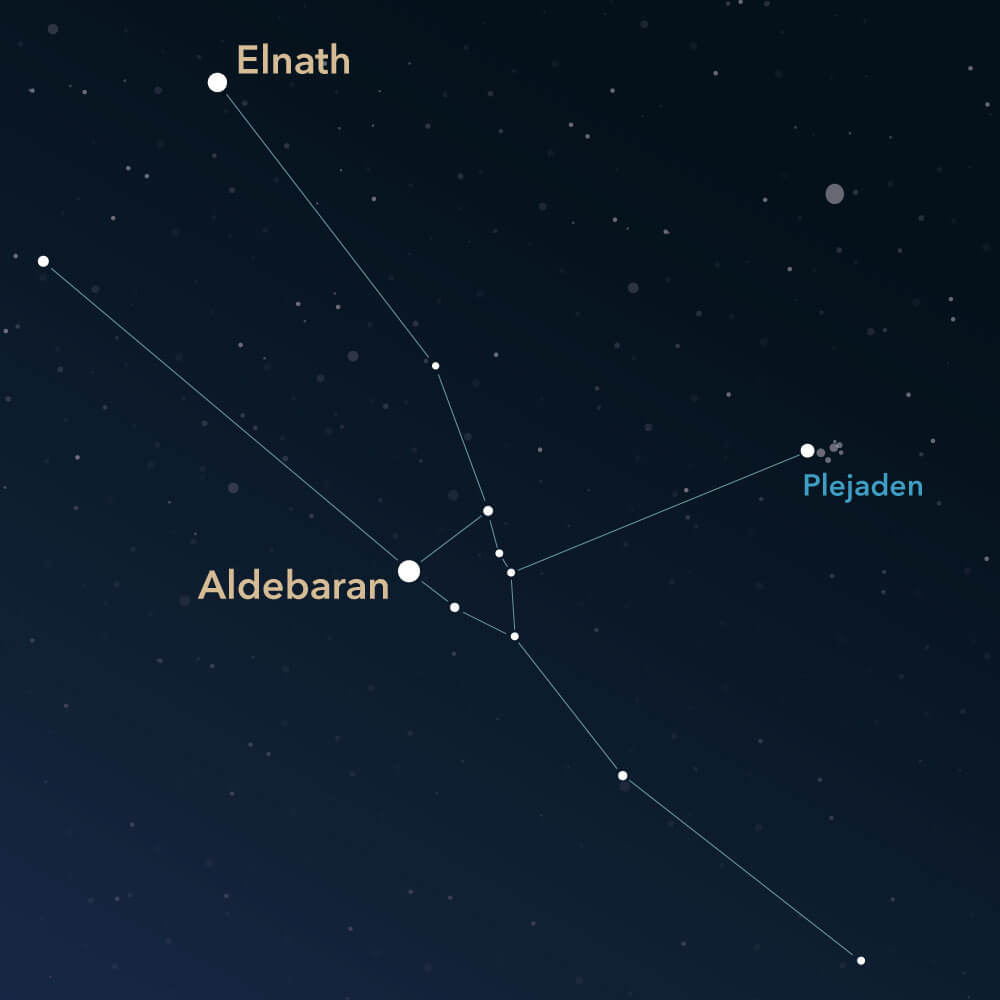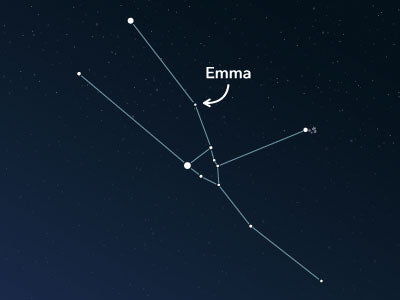The constellation Taurus
Characteristics
- Other names / Symbolism
- Bull
- Hemisphere
- Both Hemispheres
- Visibility
- October - January
- Area
- 797 deg²
- Brightest star
- Aldebaran (HIP number 21421)
- Specialties
- Open star clusters, planetary nebula, gas nebula

Taurus, Latin for Bull, is a very old but prominent constellation and originates from Greek mythology. Furthermore, it is one of the 48 constellations described by the Greek-Roman astronomer Claudius Ptolemy in ancient times. It is the origin of the zodiac sign of the same name, which plays an important role in astrology today. In the area of Taurus, there are several exciting deep-sky objects to observe.
Hemisphere, visibility, and area
Taurus stretches across the celestial equator and is visible in many places. It can be fully seen in the night sky between latitudes 89° N and 59° S. Thus, it can be observed from anywhere in the northern hemisphere. South of the equator, it is not visible in Antarctica and the surrounding ocean.
The constellation lies on the ecliptic, the apparent path of the sun and other planets, such as the moon. Therefore, it is one of the 12 astrological zodiac signs. Every year between May 14th and June 20th, the sun passes through Taurus, so it is not visible. At this time, the constellation rises and sets at the horizon together with the sun.
However, the zodiac sign Taurus, which was determined based on the sun's passage through the constellation, is defined for a different period. When the astrological zodiac signs were established millennia ago, the path of the sun was shifted by about a month due to the precession movement of the earth.
Taurus is an extended constellation. It covers approximately 797 square degrees in the sky, ranking 17th among all 88 constellations.
Some very bright stars are located in the constellation. The two most striking ones are Aldebaran (Latin: α Tauri, Alpha Tauri) and Elnath (Latin: β Tauri, Beta Tauri). They are not only the brightest stars in the Taurus constellation but also among the 30 brightest stars in the entire night sky.
The brighter of the two is Aldebaran. It is a double-star system whose main star is a red giant. Its apparent magnitude is approximately 0.87, and it marks the head of the bull. Its distance to the sun is estimated to be roughly 65 light-years. On the other hand, Elnath has an apparent magnitude of roughly 1.7. It is a blue-white star located approximately 130 light-years away from earth.
Taurus is situated between a number of well-known constellations in the sky. Along the ecliptic, the constellations Gemini and Aries border to the west and east, respectively. In the north lie Auriga and Perseus. Southern, the prominent constellations Orion, Cetus, and Eridanus are located.
Specialties in the constellation
Taurus contains some interesting objects, such as a gas nebula, several open star clusters, and a planetary nebula.
The gas nebula NGC 1952 is also known as the Crab Nebula or M1 (Messier 1). It is the remnant of a supernova with a pulsar inside. In a telescope, the gas nebula appears as an oval patch.

The brightest open star cluster in Taurus is M45 (Messier 45), also known as the Pleiades. The second name comes from Greek mythology. It is one of the most famous and conspicuous open star clusters in the night sky. M45 contains approximately 3,000 stars, which are located about 410 light-years away. Some of the stars can be easily seen with the naked eye. They lie in the northwestern extension of the constellation.

The Hyades are another visible open star cluster. It has an apparent magnitude of about 1.6 and can also be seen with the naked eye. The star cluster lies southwest of the bright shining star Aldebaran.
The planetary nebula NGC 1514 is not particularly conspicuous and has an apparent magnitude of only 10.9.
Mythology
The most famous of the many stories about the mythological origin of Taurus involves Zeus, who, in the form of a white bull, abducted the beautiful Europa.
Europa was with her friends on the beach of Tyre when the bull gently lays down beside them. He allowed himself to be stroked and decorated with flowers until Europa finally rode on him along the beach. Slowly, the bull approached the waves and walked deeper and deeper into the rough sea until he was swimming, and Europa could only hold on to him. This is how Zeus took Europa to Crete and seduced her there.
In another version, Zeus did not transform himself into a bull but sent one to abduct Europa.
In Crete, the bull fell in love with Queen Pasiphae after completing his task, for which he was punished by the sea god Poseidon - the bull then went on a rampage, breathing fire and destroying the fields. Finally, he was killed by the hero Theseus and placed in the sky.
PublishedRead more interesting articles

An overview of all 88 constellations
Learn more about all 88 constellations and read interesting information about the mythology, visibility, and features.

Planetarium App
Discover the night sky with our planetarium app!
Available for iOS and Android.

Name a star in the constellation Taurus
Name a star in a constellation and create something that lasts for eternity.